Object Record
Images
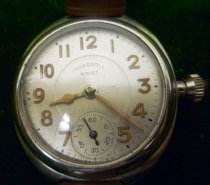
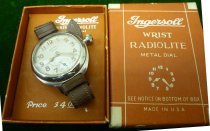
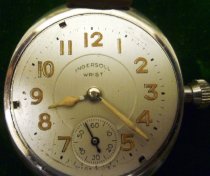
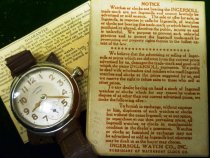
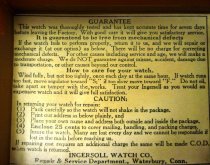
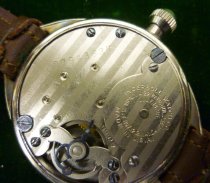
Metadata
Object Name |
Wristwatch |
Catalog Number |
76.2.109 |
Collection |
Watch |
Date |
1931 |
Description |
Brief description: Nickel-plated case, manual winding pin-pallet lever wristwatch. Round silvered metal Arabic dial with luminous (radium) numerals and hands, sunk subseconds at 6 o'clock, mounted in an oval-shaped case, marked INGERSOLL WRIST, USA MADE. Large crown at "3" winds and sets hands. Has original box and guarantee. Producer name: Ingersoll Watch Company Production date: 1931/32 Made in: New York, New York, USA Dimensions: 39.3 millimeters (case) Markings: Dial: INGERSOLL, WRIST, MADE USA. Movement: INGERSOLL WATCH Co., MADE USA. APPLIED 22 PATENTS, July 14th 25. 77,943,827 Case (inside): Curator's comments: The Ingersoll watchmaking company was founded in 1881 by Robert Hawley and Charles Henry Ingersoll in New York to sell by mail order. The concept of selling merchandise by catalog was pioneered by Aaron Montgomery Ward in 1872. To meet growing demand, Ingersoll ordered large quantities of watches from the Waterbury Clock Company, and in the following years they sold more than a million watches. Although Ingersoll first produced pocket watches, it later moved into the wristwatch market. The company continued to trade in America until 1922 when, after financial collapse, it was taken over by the Waterbury Clock Company. Waterbury kept the company running until 1944, but more financial difficulties resulted in its sale to the United States Time Company, makers of Timex. The quantity of Ingersolls sold had been a staggering 6 million by the turn of the century, 60 million when they sold out in 1922, and 96 million when production ceased in 1944. The company was made famous by the $1 watch; by 1905 they had produced 3 million pocket watches per year selling for $1. Their slogan became "The Watch That Made the Dollar Famous." The Ingersoll name was used in America until 1951 (Ingersoll continued to be used in Britain for many years), when the new name Timex came into existence. This watch is a typical example of an early, mass-produced wristwatch. The movement is essentially the same as that in pocket watches but is smaller for wearing on wrist. It has a pin-pallet lever escapement, invented by G. E. Roskopf (see registration no. 1987, 1012.2), a design that became the standard for cheap mass-produced watches, as well as alarm clocks, throughout the twentieth century. Actually the pin pallet escapement was invented by the French watchmaker Louis Perron of Besancon in 1798. Roskopf was granted US patent No. 75,463 10 Mar. 1868, for a changeable escapement for watches (this patent said that the escapement could be adapted for use with a cylinder or lever as well as a pin pallet). Roskopf patented his watch in France with French patent No. 80611 of 25 Mar.1868 for a watch with a type of platform escapement. He patented his designs in several countries (Belgium, No. 21988, 3 Aug. 1867) but never in Switzerland, because the idea had been previously patented by L Perron in 1798. An advertisement in the November 15, 1929, Maclean's magazine extolls the qualities and virtues of this watch received by "thousands of letters in Ingersoll's files bearing testimony to the reliability of their timepieces." The watch was sold for $4.50 at that time. Ingersoll coined the phrase: "The watch that made the dollar famous." ACKNOWLEDGMENTS: Michael C. Harrold - American Watchmaking 1850-1930 British Museum - Roskopf and pin-pallet design |
Maker |
Ingersoll Watch Company |
Place of Origin |
New York, New York, USA |
Notes |
A 27782 |
